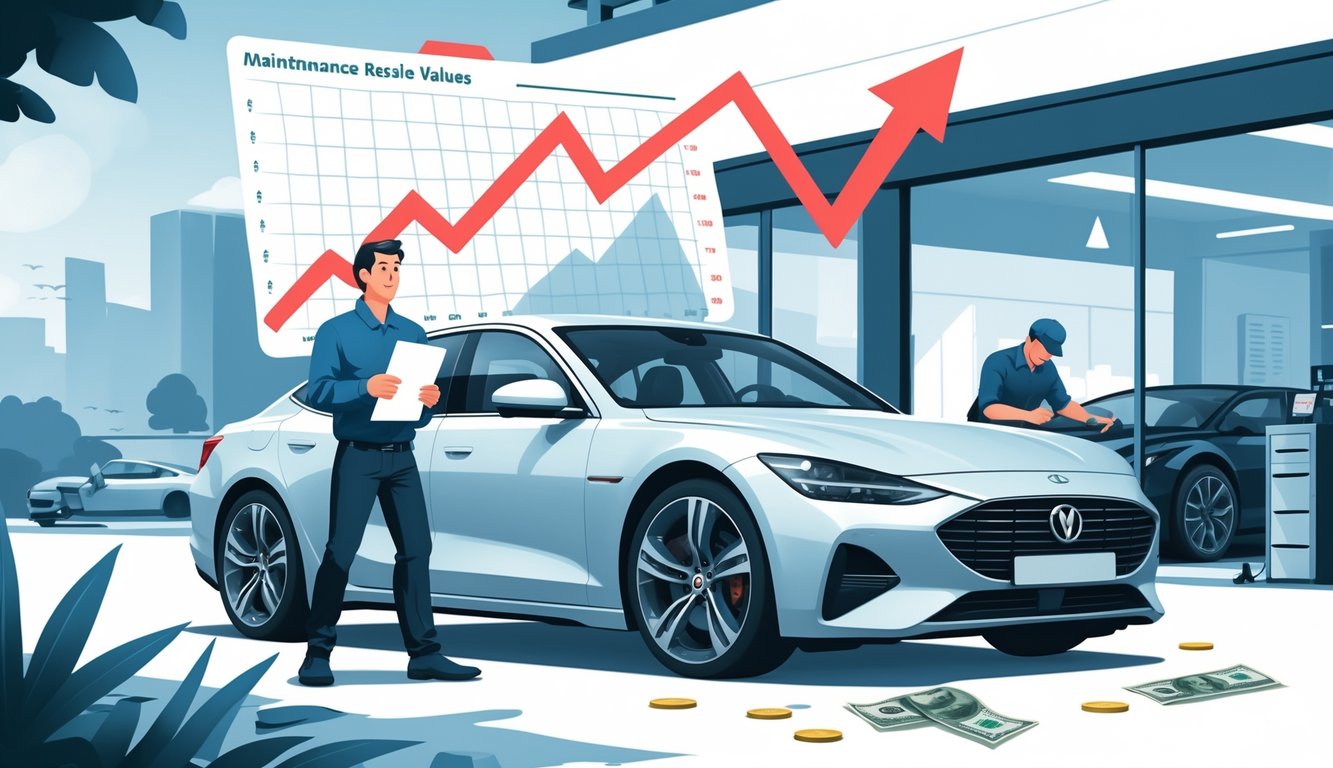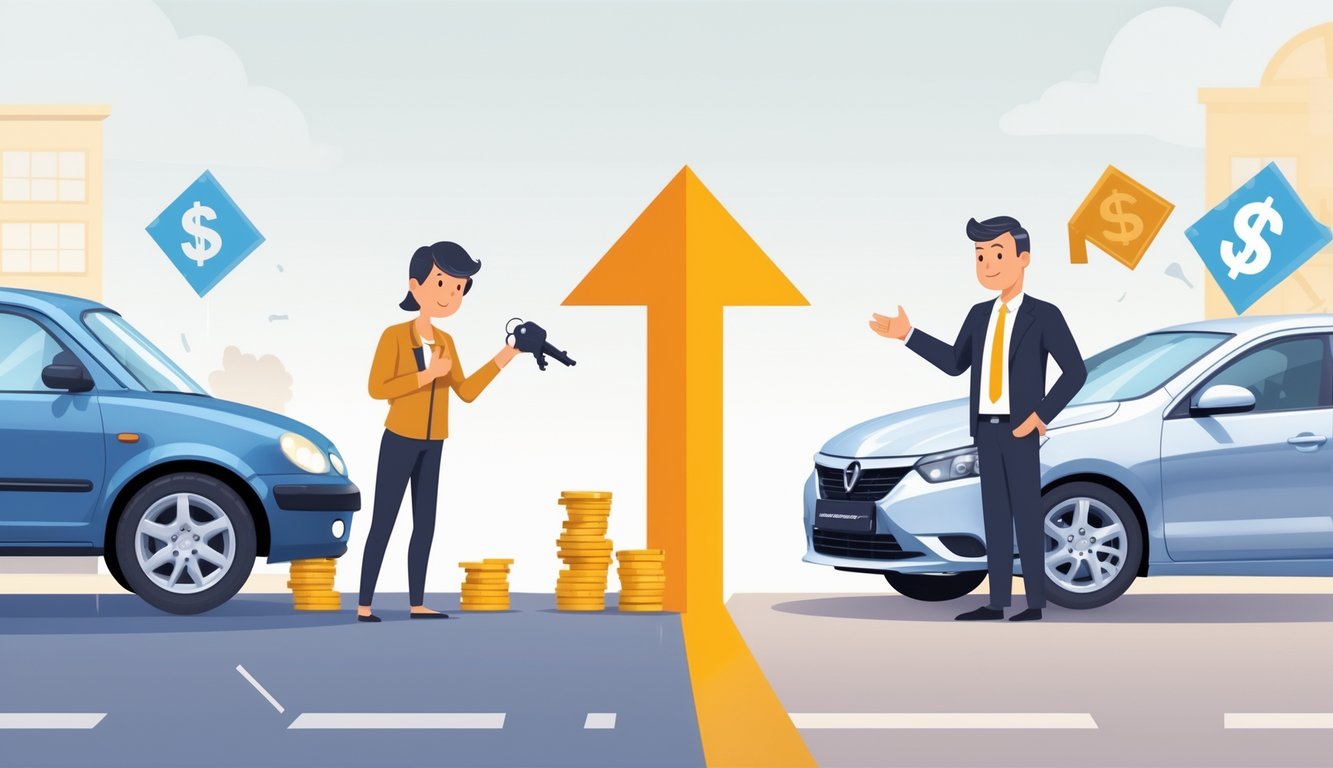
Neglecting the Importance of Maintenance History

People show up to look at a used car thinking “Well, it’s shiny, so it must be cared for.” I mean, come on. The myth that a clean hood means a healthy engine? Laughable. Buyers and Carfax obsessives want to see the service booklet and the vehicle history, especially with the odometer creeping up. Miss a scheduled maintenance? Suddenly you’re the guy with the “mystery gap”—like a missing episode in a trashy TV series.
Documented Maintenance Matters
Some sellers have this weird confidence, like, “Oh, nobody’s going to care that I skipped an oil change in 2019.” I’ve seen people show up with spreadsheets tracking every filter swap and tire rotation—way more organized than my pile of receipts. Dealers don’t even argue if you’ve got a full maintenance record. Even a note about a maintenance plan on the invoice can bump your offer up by $500, according to a Kelley Blue Book interview with some CPO manager.
But if you skip the records, don’t expect KBB or Edmunds to help you out. Miss a timing belt or brake fluid flush, or leave a blank in the history? Instant suspicion. Trade-in values drop fast, and private buyers will absolutely point out every gap in your records. Every weird tire and squeaky brake pad suddenly means “hidden neglect.” Detailing won’t save you. The best is when someone says, “Wait, missing my 80K maintenance could cost me 10% of my car’s value?” Yeah, apparently it can.
DIY Maintenance: Does It Hurt Value?
I did my own coolant flush once—YouTube makes it look easy, and I’m not paying $200 for a 20-minute job. Was that a mistake? Maybe. If you’re doing your own oil changes or brake checks, buyers don’t care unless you can show receipts for the good stuff (Mobil 1, by the way—my mechanic friend swears by it, and Wix or Bosch filters only, apparently). Handwritten notes? Forget it. Some buyers just don’t trust work that’s not from a shop, unless you’ve got receipts and maybe a few photos. And warranty? Most manufacturers want to see stamps, not just your word and some empty bottles in the trash. Vehicle history reports never mention owner maintenance, so banks and certified programs just check “service unknown”—and that’s extra bad if you’re selling a high-mileage German car. I still keep my receipts in a Ziploc in the glovebox, which once fell out at Starbucks, so someone in Boston knows every DOT4 fluid I’ve tried.
If you’re lazy with records, a $20 fix can turn into $1,500 lost at resale. Buyers want proof, and picky inspectors will find every gap in your story, especially if you skipped digital records or used some sketchy aftermarket part. Even a rainstorm won’t wash away a bad maintenance trail.
Overlooking Pre-Purchase Inspections

Ever tried skipping a pre-purchase inspection to save a couple hundred bucks? I did, back in 2017, with this “mint” hot hatch. That little rattle? $3,200 in hidden repairs later, I learned my lesson. Ignore the inspection and you’re just gambling with your own money. Nobody ever tells you how fast your resale value tanks when you get hit with a hidden issue.
Uncovering Hidden Issues Before Sale
Here’s the sketchy part: nearly half the private sellers I know don’t bother with a pre-purchase inspection before listing. I get it, you want to sell fast, but a mechanic spends 45 minutes poking around and always finds something you didn’t know about. Especially with performance cars—my neighbor’s turbo sedan needed $1,400 in gaskets, found only after buyers started nitpicking with a third-party report.
Some folks think old receipts are enough to build trust. But a real pre-purchase inspection (PPI) is more than a box to check—it catches brake wear, odometer rollbacks (yes, still a thing), and engine codes you’ll never see on your dash. I’ve watched buyers walk away or drop their offer by $2,000 just because a leak showed up in the inspection. Performance models get hit hardest, since repairs are pricier and parts wear out faster. If you skip the inspection and hope buyers won’t notice, good luck. And seriously, empty the trunk.
Pricing Pitfalls With Private Sellers and Dealerships

Every week, someone tells me their ten-year-old sedan should go for $1,500 above market “because it’s a Honda.” Sure, except buyers have Google and price apps, and your air freshener isn’t worth extra. Dealerships are just as messy, only with more paperwork and last-minute panic.
Private Sale Expectations
I tried to help a friend sell her car last month. She set the price after looking at a couple random Craigslist ads. No calls. Private sellers almost always overestimate value, probably because they believe “dealers mark up way more” or “private buyers want anything off-lot.” Maybe, but not at wish prices with a broken radio and a mystery in the service history.
There’s a 2023 iSeeCars report out there: over 75% of private sellers end up dropping their price by $500 or more, usually because they ignored KBB fair market ranges. Two minutes on CarGurus shows dealers price about the same as individuals, but they offer financing and test drives. Private deals rarely close at the “dream” price—half end up at or below trade-in value, especially for unpopular models. Unicorn Corolla pricing? Don’t get me started.
Dealership Versus Private Sale Value
I’ve done enough used inventory audits to know: dealership discounts aren’t magic, just planned markdowns bundled with weird extras like paint insurance or pointless VIN etching. Buying from a dealer costs about 5-7% more than private sales, but that’s just for the warranty, paperwork, and “peace of mind.” The gap almost never shows up on popular models, unless the car’s been neglected or you’re selling during a buying drought.
Dealers negotiate with printouts—“NADA values for your Camry are down $700, here’s the proof.” Private sellers? It’s just emotional. The idea that dealers make “thousands” on every car is mostly a myth; margins on certified SUVs might be $1,200, but old sedans? Sometimes $400 if you’re lucky. Private sellers risk more: no arbitrators, no financing, and if you mess up the title paperwork, the whole deal falls apart. I watched a deal collapse because nobody knew what a lien release was.
